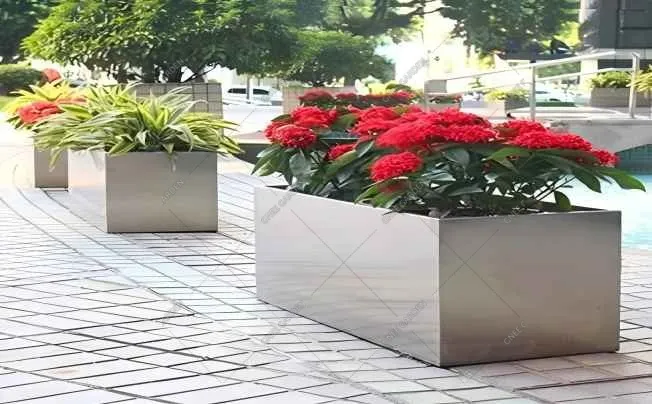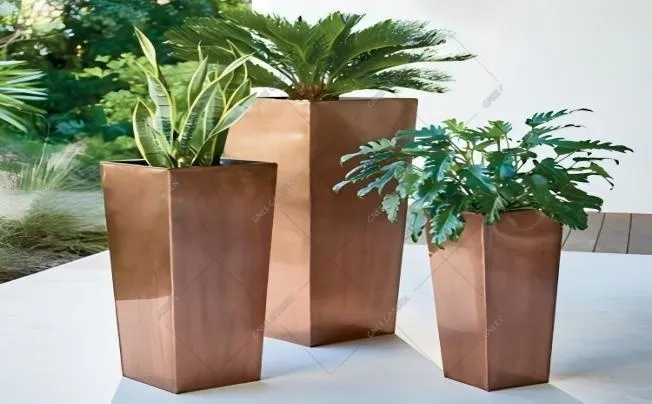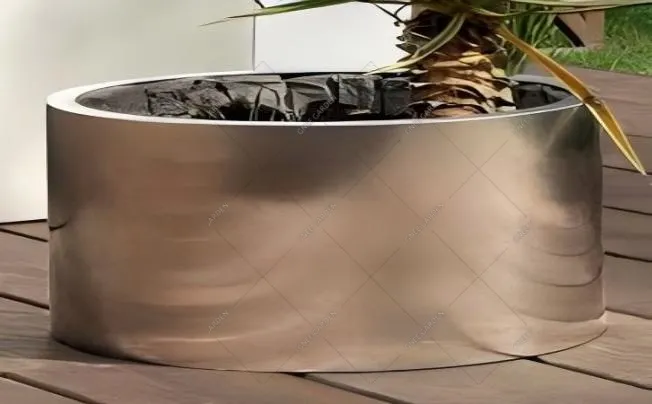What Do You Fill The Bottom Of A Large Planter With?
In gardening, every little thing counts for the growth and success of your plants, and you can't ignore the filler in the bottom of big pots.
Advantages of gravel and expanded clay
Typically, natural boulders with rough surfaces and uneven shapes are crushed to create gravel. There are many pores between its particles as a result of these features. When a layer of gravel is placed on the flowerpot's bottom, extra water can swiftly drain away through these pores during watering, preventing the issue of water buildup-induced root rot. When cultivated in a flowerpot with gravel at the bottom, plants like succulents, which have very high drainage needs, can keep their roots dry and minimise the risk of black rot.
Ceramsite's inside is teeming with microscopic pores that provide superior drainage and water absorption. Its placement at the bottom of the flowerpot can help control humidity by both rapidly absorbing extra water and gradually releasing it as the soil dries out. With ceramsite, some flowers that are frightened of waterlogging, like asparagus fern, can also prevent root rot and yellow leaves brought on by water buildup, keeping the foliage green and the branches upright.

Clever use of foam board and plastic bottles
The foam board weighs little. By breaking it up and placing it on the flower pot's bottom, you can increase the number of holes in the soil. This will allow extra water to swiftly percolate through the holes and prevent water buildup. In addition to ensuring proper drainage, utilising foam boards for the bottom of the flower pot can facilitate moving the green radish, which is frequently grown indoors.
Don't discard the completed beverage bottles. Choose the right number based on the flower pot's size after it has been cleaned and dried, set them upright at the bottom, fill it with dirt, and plant flowers. Because of their unique shape, they not only take up less room and soil, which makes the flower pot lighter, but they also create drainage channels around the bottle body, which facilitates easy water drainage. After being filled with plastic bottles, the weight of some hanging flower pots decreases, making them safer and more stable to hang. Additionally, many flower pots that are placed on balconies can now be easily moved and cleaned every day, which makes flower-growing more convenient.
Composting potential of fallen leaves and branches
Gather the dried leaves that have fallen, give them a little smash, and then distribute them throughout the flowerpot's bottom. They will naturally break down over time with regular watering, creating rich humus that will continuously supply energy for plant growth.
You should also not undervalue little branches. Slice them into little pieces, then arrange them at the bottom of the flowerpot both vertically and horizontally. This can create an aerobic environment for the root system by improving soil permeability throughout the gradual decay phase, in addition to providing a solid support structure to avoid excessive soil settlement and plant lodging.
If the fallen leaves and branches are fresh, it is best to pile them up and let them decompose for a while before using them to fill the flowerpot. This will prevent the plant roots from being burned by too much heat during the fermentation process. However, when using fallen leaves and branches for composting, make sure that the materials are free of pests and diseases to prevent harming the plants.

Support functions of mesh panels and wire mesh
Grid boards are essential for filling the bottom of large flower pots, whether they are constructed of metal or plastic. It may be firmly placed at the bottom of the flower pot and has a consistent grid structure, giving the soil above it solid support. When we plant large flowers, like peonies and roses, the earth becomes heavier as the plants get bigger. The bottom soil is readily compacted without the grid board's support, which prevents the roots from breathing. Because of the grid board, the soil may stay loose and air can easily reach the roots, fostering an aerobic environment that supports the formation of the root system and ensures that the plants grow robustly and naturally and produce beautiful, enormous flowers.
Another effective tool for stabilising the soil in the flower pot is wire mesh. Lay the wire mesh at the bottom of the flower container after cutting it to the appropriate size. In addition to keeping a significant amount of soil from escaping the drainage hole, its fine mesh may maintain the soil's uniform distribution during the filling process. Wire mesh can help stabilise the soil foundation for tall plants with shallow roots, such dahlias, keep the flower pot from toppling over or the plant from tilting from wind or collision, and safeguard plant growth while maintaining an attractive appearance. To further improve stability and simplify gardening, the wire mesh's corners can be bent to fit the flower pot's inner wall during installation.

Selected Blogs
-
What customization services are available for metalworking customization?
2024-12-12
-
What Is The Difference Between A Plant Container And A Raised Bed?
2024-04-23
-
Garden Screening & Fence Panels
2024-04-23
-
Gardening pot selection tips
2024-04-17
-
The function and collocation of horticultural fire pot
2024-04-17


